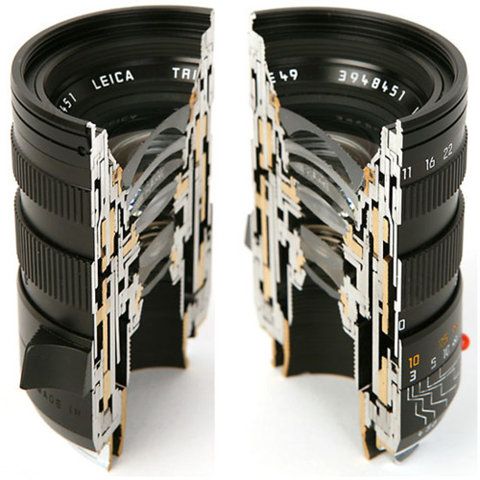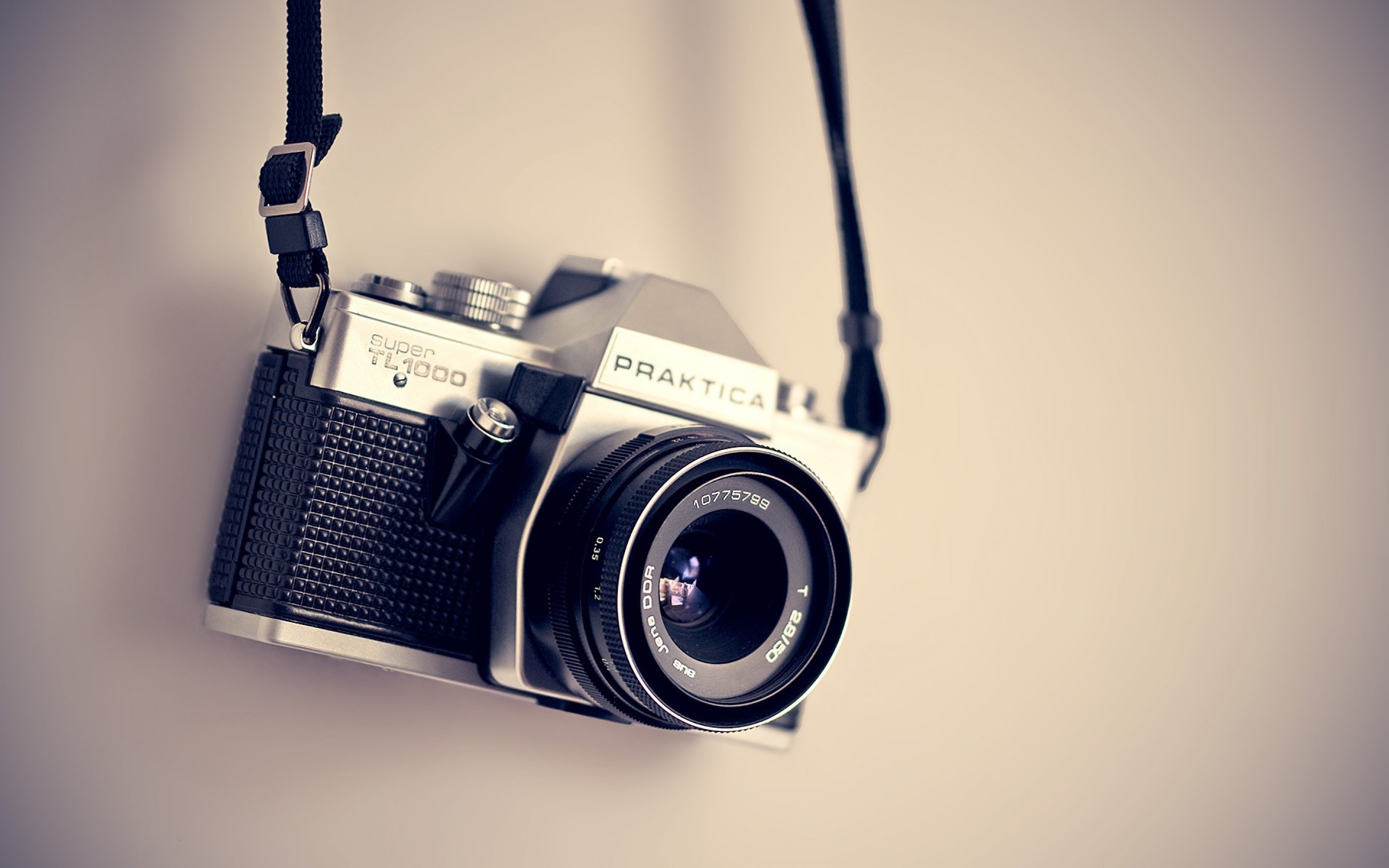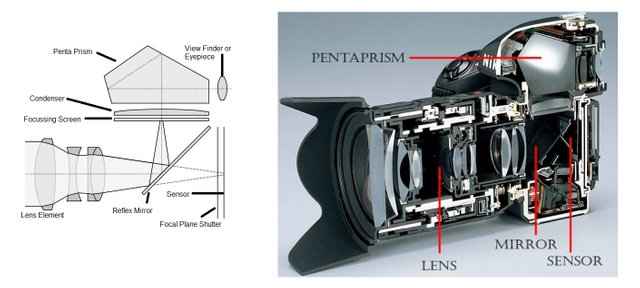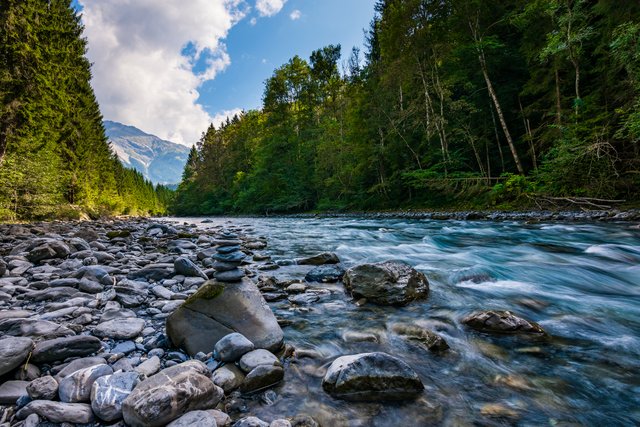A Beginners Journey in Photography - Part 2: Which DSLR should i buy... Also challenge!!!
So... Today is going to be the day. I will be buying the camera. Well at least in my head... I don thave the money yet and I have to wait for my next pay which comes on January 15th. But hey! At least I can dream.
So in my last post on this topic I was talking which camera is the right one for you, the faithful reader of my blog, but more importantly, the right one for me, the would-be camera magician. I discovered that if I really am serious about photography there is only one option to me and that is a DSLR camera.
I found a pretty good explanation for how DSLR cameras work on youtube.
It is pretty simple as one might think with geometrical optics, where only mirrors and lenses are involved. To summarize, DSLR cameras are made out of an objective which is the front of the camera, where the light comes into the body of the camera. The objective of the camera is made out of an aperture, also named the shutter, which determines how much light you let in. The more light you let in the sooner you can stop the exposure because you will get enough light to get quality contrast in the picture. The objective also houses the lenses that focus the light from a specific plane, which you are photographing. The smaller the aperture the narrower the focus. This means the plane that will be well focused at a specific lens position is much wider if the aperture is smaller and vice-versa. As we see an objective is a complex system (but not that complex) with many parts that move together.
The next part of the camera is the body. This is the part that houses the sensor, which captures the light, and the pentaprism which allows you to see the image as seen through the shutter if you look into the viewfinder. When you press the button to take the photo, a mirror that is in between the shutter and sensor, and which directs light into the viewfinder, moves out of the way, which allows the light to be captured by the sensor. And voila... You get an image.
But what makes this image from your camera stand out in comparison to other cameras? There has been a time-long debate about what is more important - the objective or the body of the camera. Well I think that whole debate is pointless. Both these components should be pretty much equal in performance. If they are not that means you can not get the whole power out of your better component, because the other one is lacking.
Lets illustrate this on an example! Lets say you are shooting a sea-gull. You have the top-notch objective lens but the body of your camera is not so good. That probably also means that the lowest shutter speed is not as fast as in better models of camera bodies. Because the sea-gull is in flight the shutter speed must be really fast if you want your image to be crisp and not blurry from the bird moving its wings. This would mean that even-though you have the perfect objective-lens for the job, the body is not up to the task because of its slow shutter speed so everything is hazy and unclear.
On the other hand, you are trying to take a photo of a landscape. Shutter speed is irrelevant here because everything is still. What matters is a good objective lens which has a good depth of field and low aberations, which come into play when you are trying to take wide-angle shots.
I hope I illustrated that both components are equally important.
Next time I will be talking more about the objective lens and which is best for each specific application.

Source
From now on until I reveal which camera I intend to buy I am also issuing a challenge to all of the readers of these posts. At the end of every post I will post a photo taken by the camera I chose to be mine. If you figure out which camera I intend to buy I will be giving you 10 STEEM after the reveal is made in about a month. The first one to guess correctly will be given the whole prize. You can enter this challenge by commenting your answer down in the comments bellow. You must also resteem the post you commented on and upvote it.
Good luck to you all and see you soon!
To always stay to date on my and Urška's adventures please follow me and Urška at @urskaskamen. If you like this post and want to keep it coming please upvote me. It trully means a lot to a minnow like me. Also If you have any questions feel free to comment and I will definitly try to answer you in a timely manner.



Deductive method: You are a physicist, so you will go for numbers, not for "artistic" whatever. You mentioned SLR, not MILC, although Sony a6000, a7 or XT20 are great, you want SLR.
It leads us to Canon vs Nikon. But you want it for landscapes, not for birds, thus Nikon (highest dynamic range, Sony sensor in a robust SLR body).
You are waiting for the salary, thus it's not the entry level, 3xxx, but you will be reasonable, thus not "3 digit Nikon".
I vote for the Nikon 5xxx, they are all the same more or less.
My gear: Sony a6000 with 16-50 and 55-210 (in a kit) + old Russian Helios + wide-angle Samyang. Total amount spent = 900 e.
Very nice! Not saying you guessed it, because the challenge will be going for a couple of weeks but I like your like of thinking. :D
Congratulations! This post has been upvoted from the communal account, @minnowsupport, by maticpecovnik from the Minnow Support Project. It's a witness project run by aggroed, ausbitbank, teamsteem, theprophet0, someguy123, neoxian, followbtcnews/crimsonclad, and netuoso. The goal is to help Steemit grow by supporting Minnows and creating a social network. Please find us in the Peace, Abundance, and Liberty Network (PALnet) Discord Channel. It's a completely public and open space to all members of the Steemit community who voluntarily choose to be there.
If you would like to delegate to the Minnow Support Project you can do so by clicking on the following links: 50SP, 100SP, 250SP, 500SP, 1000SP, 5000SP. Be sure to leave at least 50SP undelegated on your account.
This post has received a 0.26 % upvote from @drotto thanks to: @banjo.
Dude, that Leica lens cut in half made me cringe! :)
On point, a good beginner's guide looking for an entry-level DSLR. Although, I find that the argument " I discovered that if I really am serious about photography there is only one option to me and that is a DSLR camera." seems like an overstatement, IMHO. The evolution of MILC systems and the advantages they carry point to the fact that mirrorless is a system on the rise, chosen from casual photography to wedding and professional one, with little or no disadvantages over DSLRs. One cannot argue about the fact that the flagships of Nikon or Canon are made for the most dedicated wildlife, sports and journalist photographers. And indeed they are unbeaten in this segment. For the rest of us, even professional photographers not involved in heavy duty travel with NG or other news sources in the war zones, the mirrorless system offers the best compromise. For example, the Fuji prime lenses are exceptional at half the price of their full-frame DSLR counterparts. Also, it is versatile, small, weather resistant. Paired with an XT2, you can't go wrong in the landscape photography. So my guess is you would rent an XT2 and a 16mm 1.4 Fujinon lens, you will love it, and you will get a Fuji mirrorless system. :)
Happy Christmas and nice article! Cheers! Followed you!
I have read some about the mirrorless systems and It didnt look bad at all. But I guess through the reading I just kind of prefered the DSLR. I may look some more into the mirrorless.
I am just a beginner looking for a camera so everything I write about should be taken with a grain of salt. I just found the concept that a beginner writing a beginners guide as he is experiencing the field very interesting. My posts should not be percieved as actually giving advice.
Anyway. I appreciate the comment a lot. I love the advice, I really do!
As I switched from DSLR Canon 600D to MILC Sony a6000, considering the viewfinder - I can't tell you what is better. A few years ago, electronic viewfinders had terrible lag, to the point of usefulness. The same statement for autofocus. Today, the margin is really small. I noticed that the people behave differently when exposed to Canon/Nikon, they feel you are the "pro". And I also feel better when I grab my Canon. If you watch the specs, MILC/ SLR are the same, but as the tools dSLRs are better in general (battery, grip, articulating screens, buttons). Concerning the size, those are the same for me - I carry them in a bag anyway.
The one thing that might be important for me would also be weight and size because the main use will be landscape photography when I go hiking. But if I want to have a few lenses and a tripod (which I think I need for longer exposures) I will have to have a bag anyway so it doesnt really matter. I do think that mirrorless systems are the future. :)
Tripod, to have quick-release and the hook to put the bag on it and avoid falling. There are nice backpacks with the slots for all the things including the tripod. For the wide-angle, Samyang is cheap but manual for all the systems. For autofocus, Canon 10-18 is unbeatable with the price (around 225 Eur). Nikon counterpart is about 350-400. Sigma is around 400-500. And the native Sony - 700e.
I cant really tell you what I am going to buy but you are aiming way to low buddy. ;)
I am going to look over all the accesories in a future post. Your input will be much appreciated!
Careful here. You will end up with 10kg equipment hiking. The strain on your neck and back will be huge with each consecutive hiking session. One thing most don't get about photography is that it is supposed to have fun. Fun you have with a versatile system, with a good volume to weight ration, that has real dials to change settings on the fly, and not buttons with endless menu options. You need the fun in photography, not the cumbersome gadgets. Landscape photography indeed requires a wide angle lens, a good prime, which by definitions is big, it is physics. But you can at least offset this with a small body, like mirrorless has to offer. You need WR also, it is a must in landscape photography. So forget entry level Nikon. I really encourage you to take a look at Fuji mirrorless system. The prices of XT1, which is WR, are ridiculously low for a beast of a camera. I strongly advise to start with it, a 16mm 1.4 prime ( costly, but comparable, and no joke, with Leica primes ) and you will have a 1,6k eur system that is build to LAST and is fun to use, and it is half the weight and size of DSLR. With a slide-in neck strap, you don't need a bag, or a tripod. Just hop on your bicycle and have fun.
I wholeheartedly agree with you. But the problem is I dont have that kind of money. It is almost 2 times my budget which is simply too much. From what I have read I do think mirrorless is the future. But the future is just not right now at least for me and what I am looking for!
I definitly agree about the fun part. But If I am going on a 10 hour hike I will only take the camera and a lens with me. I am not taking everything. I will take it all only if I intend to be at one place for 2 hours but then the weight will not be an issue I think.
Thanks a lot for the comment.
Have a little faith in Steem it, man, and you will have that kind of money! :) Best of luck in your choice!
Catalin
If I cash out all my crypto I would have that kind of money. But I dont really want to.
Been wanting to get into photography, saving this for later. Thanks for the information!
Thank you a lot. But remember. I am only a beginner in this field. Do other research also.